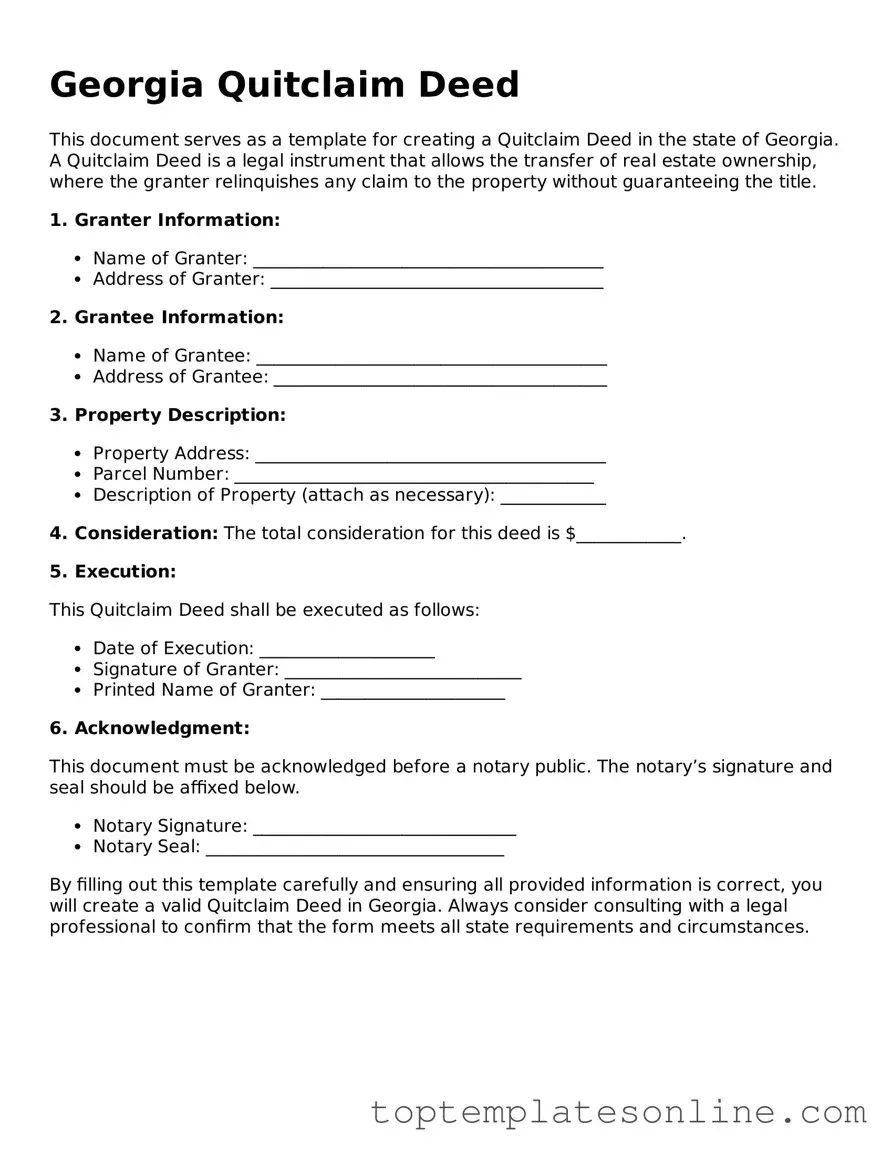The Georgia Quitclaim Deed form serves as a vital instrument in real estate transactions, allowing property owners to transfer their interest in a property to another individual without guaranteeing the title's validity. This form is particularly useful in situations where the parties involved have a pre-existing relationship, such as family members or friends, and trust each other's claims to the property. The Quitclaim Deed does not provide the same level of protection as other types of deeds, such as warranty deeds, since it does not include any warranties regarding the title. It is essential for the grantor, or the person transferring the property, to understand that they are relinquishing their rights without any assurances. The form requires specific information, including the names of the grantor and grantee, a legal description of the property, and the date of transfer. After completion, the Quitclaim Deed must be signed and notarized to ensure its validity. Once recorded with the appropriate county office, the deed serves as public notice of the transfer, which can help prevent future disputes regarding ownership. Understanding these aspects is crucial for anyone considering using a Quitclaim Deed in Georgia.
